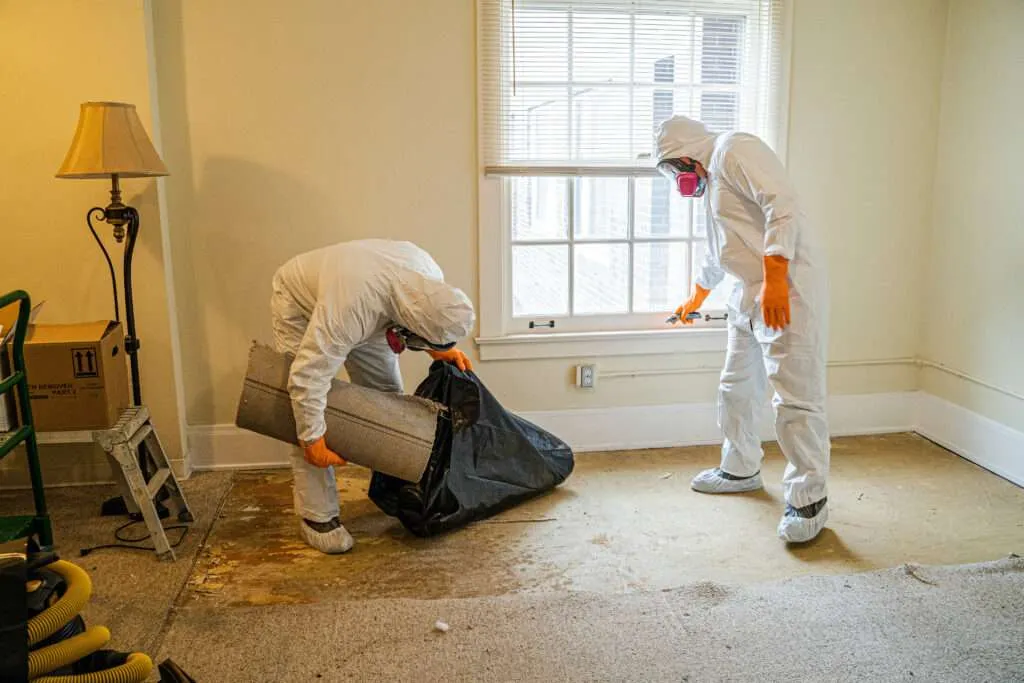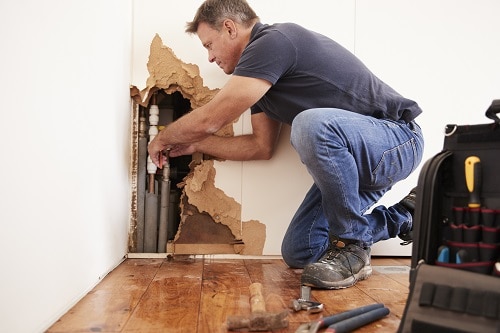Common mistakes to avoid when hiring Flood Cleanup Services
Water Damage Restoration 101: Understanding the Process and Cost
Water damage can strike all of a sudden, leaving homeowners in a state of complication. Understanding the restoration procedure is necessary for efficient recovery. From evaluating the damage to picking the ideal company, each step impacts the total result and price. Aspects such as the kind of water damage and necessity additionally play a significant duty. What are the certain strategies utilized in remediation, and how can one get ready for potential costs?
Kinds of Water Damage

Initial Analysis and Examination

Water Extraction Strategies
Following the preliminary assessment, reliable water extraction methods are used to alleviate damage and prevent additional issues. These techniques involve using specific tools such as industrial-grade vacuums and submersible pumps - Water Damage Restoration. The option of method depends on the quantity of water present and the sort of materials affected. For standing water, completely submersible pumps are commonly made use of for fast removal, while vacuum cleaners are ideal for removing water from carpets and upholstery. In addition, advanced methods like water removal floor coverings might be utilized for hard-to-reach locations - Water Damage Restoration. The goal is to get rid of as much water as feasible, minimizing the capacity for mold development and architectural damage. Trigger and efficient water extraction is necessary in the total water damage remediation process
Drying Out and Dehumidification Process
When the water removal is total, the drying and dehumidification process comes to be crucial to recovering the affected location. This phase generally uses industrial-grade dehumidifiers and air movers to properly minimize dampness levels. The dehumidifiers attract damp air, eliminating excess moisture, while air moving companies flow air to speed up dissipation. Surveillance equipment is frequently made use of to track humidity and temperature level levels, making certain suitable drying out conditions. The duration of this procedure can vary depending upon the extent of the water damage and environmental factors. It is vital to completely completely dry all affected materials, this content consisting of wall surfaces, flooring, and furnishings, to stop mold growth and structural damage. Appropriate execution of this action is vital for an effective restoration result.
Cleaning Up and Disinfecting Damaged Locations
As soon as the drying process is total, a thorough preliminary evaluation and examination of influenced areas is vital to recognize contamination levels. Reliable cleaning techniques and suitable products need to then be employed to eliminate debris and stains. Finally, sanitization and sanitation approaches are necessary to assure that unsafe virus are eliminated, recovering the space to a secure condition
Preliminary Analysis and Examination
Before beginning any reconstruction initiatives, a thorough first evaluation and evaluation of the affected locations are essential for reliable cleaning and disinfecting. This procedure involves recognizing the degree of water damage, figuring out the source of the water breach, and examining the materials influenced. Inspectors usually search for signs of mold and mildew growth, structural honesty problems, and damaged valuables. The analysis likewise consists of examining dampness degrees using specific devices to ensure no concealed water pockets stay, as these can bring about more difficulties. Recording the searchings for is crucial for intending the following action in the restoration procedure. A comprehensive preliminary evaluation allows remediation professionals to develop a targeted strategy for reliable cleansing and sanitizing, eventually decreasing damage and health dangers.
Cleansing Techniques and Products
Efficient cleaning and sterilizing of water-damaged locations need a selection of techniques and products customized to the particular products affected. For porous surface areas like drywall and carpeting, extraction approaches are necessary to eliminate excess wetness, followed by deep cleaning with specialized cleaning agents. Non-porous products such as tile or steel can be cleaned up making use of commercial-grade cleaners that efficiently remove impurities. Heavy steam cleaning is one more reliable technique, especially for carpetings and furniture, as it uses high temperature levels to get rid of bacteria and mold and mildew (Water Damage Restoration). Furthermore, environment-friendly items are progressively prominent for their security and efficiency - Water Damage Restoration. Ultimately, picking the ideal cleansing techniques and products not only guarantees prompt sanitation however likewise aids in protecting against additional damage and carcinogen connected with water intrusion
Sanitization and Disinfection Approaches
When resolving water damage, correct sanitization and disinfection methods are essential to assure the security and health of the damaged atmosphere. After initial cleansing, surface areas should be treated with ideal disinfectants to eliminate microorganisms, mold and mildew, and microorganisms that flourish in wet problems. Common techniques consist of making use of EPA-approved chemical disinfectants, which can be applied via spraying or cleaning techniques. In addition, ultraviolet (UV) light systems can successfully sanitize locations by counteracting microorganisms without rough chemicals. The option of method commonly depends on the kind of materials influenced and the extent of contamination. Inevitably, complete sanitization not only brings back a risk-free living space yet likewise assists avoid future health and wellness risks connected with sticking around wetness and mold and mildew development.

Repair Work and Restoration Options
Reviewing the damage triggered by water exposure is important for identifying the proper repair services and remediation alternatives. Homeowners may deal with numerous problems, consisting of damaged drywall, deformed flooring, and compromised structural elements. Relying on the degree of the damage, fixings might entail changing sections of drywall, installing new flooring, or strengthening structural beam of lights. In instances of extreme damage, complete substitute of afflicted products could be required. Additionally, specialist conservators commonly suggest utilizing dampness meters to analyze surprise wetness levels prior to determining on the very best program of activity. It is very important to act immediately to stop mold development and more degeneration. Choosing the ideal choices not only restores the home however also guarantees lasting security and capability.
Aspects Affecting Restoration Expenses

The degree of water damage straight affects the restoration sets you back property owners can anticipate to incur. Variables such as the resource of the water, the period of exposure, and the damaged materials greatly influence rates. Clean water damage from a damaged pipeline is typically much less costly to bring back contrasted to damage caused by sewer. In addition, the level of contamination dictates the demand for specialized cleaning and disposal services, even more enhancing expenditures. Geographical location also plays a duty, as local labor rates and accessibility of restoration services can differ. Finally, the seriousness of the reaction impacts prices; quicker treatments normally cause lower overall costs by protecting against additional damage. Understanding these factors is important for house owners when approximating repair costs.
The 3 key kinds of water damage are classified based on contamination degrees: tidy water, grey water, and black water. A thorough first analysis and assessment are crucial steps in the water damage remediation procedure. For standing water, submersible pumps are normally used for rapid elimination, while vacuum cleaners are optimal for removing water from carpets and upholstery. The extent of water damage straight impacts the restoration sets you back homeowners can anticipate to sustain. Clean water damage from a broken pipeline is usually much less expensive to restore contrasted to damage created by sewage.